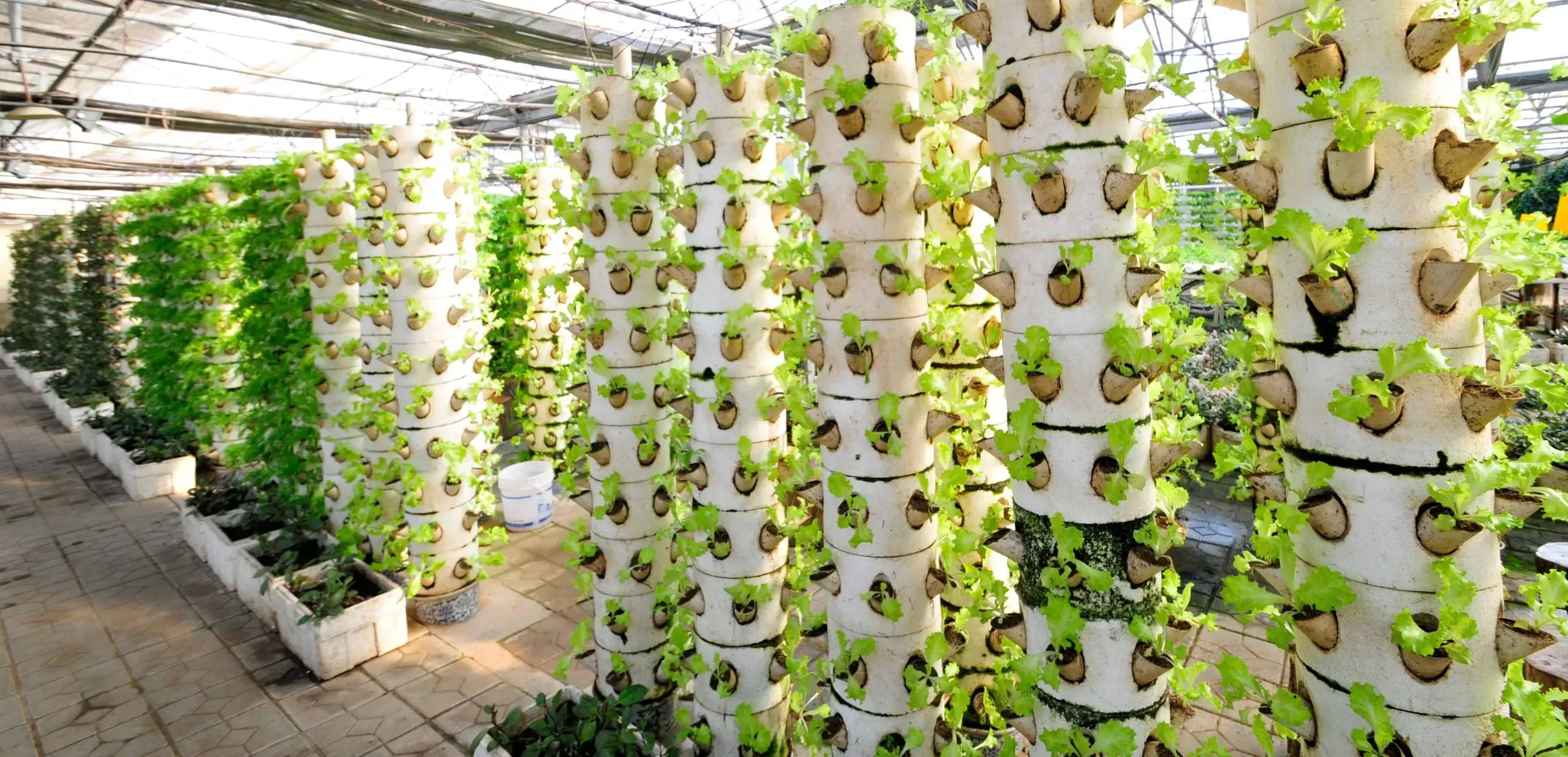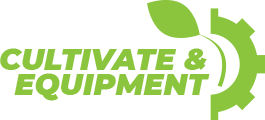Next‑Gen Greenhouse Climate Control: Trends, Automation & Sustainability
)
Greenhouse climate control solutions have evolved far beyond basic heating or cooling. Today’s commercial growers operate in an era defined by precision systems, where temperature, humidity, CO?, lighting, irrigation, and airflow are orchestrated seamlessly by intelligent automation. The goal? Unlock maximum yield, enhance crop quality, minimize energy costs, and streamline labor.
In Canada, extreme seasonal variation—from winter lows of ?30?°C to summer highs over 35?°C—demands adaptive systems. For example, fluctuations in Southern Ontario can swing by 20?°C within 24 hours. These variances directly impact plant metabolic processes like photosynthesis, respiration, and transpiration. When growers lack precise climate control, crops become vulnerable to nutrient imbalances, disease outbreaks, and inconsistent quality—all of which erode profitability.
The greenhouse climate control solutions we’ll explore in this guide represent the most forward?thinking approaches available. Ranging from IoT-powered sensor networks and AI-driven automation to sustainably integrated HVAC systems and energy-harvesting technologies, these trends represent the frontier of greenhouse technology. As a result, they offer commercial growers significant value:
Up to 20-30% energy savings through smarter control
Yield increases of 10-25% thanks to optimized environmental stability
Labor reductions of 30-50% via automation
Whether you’re operating a high?tech flower greenhouse, a cannabis grow facility, or a winter vegetable operation, this blog provides clarity on implementing next-gen greenhouse climate control solutions—and positions Cultivate and Equipment as your expert guide throughout.
1. IoT & Smart Automation
1.1 Sensor Networks: Foundations of Smart Greenhouses
Modern greenhouse climate control begins with the installation of sensor networks. These systems gather data from multiple key variables:
Air temperature (ambient and canopy-level)
Relative humidity and dew point
VPD (Vapor Pressure Deficit) sensors
CO? concentration
Solar radiation (PPFD / PAR)
Soil moisture and EC
Leaf wetness
Deploying at least 3-5 sensors per 1,000?m² ensures reliability. In a commercial setting, deploying networked LoRaWAN or Ethernet sensors—backed by battery backup and redundant pathways—offers 24/7 visibility into greenhouse zones.
Benefits include:
Detection of microclimates (e.g., an unexpectedly hot lamp corner)
Alerts for sensor drift or HVAC malfunction
Real-time climate dashboards for growers
Case study: A 5-acre cucumber operation in Ontario noted a 15% yield increase after installing a sensor-driven control retrofit—by eliminating daily temperature swings through feedback loops.
1.2 AI & Machine Learning: Beyond Basic Scheduling
Feedback systems that drive fans, CO? valves, and heat based solely on setpoints miss significant optimization opportunities. Machine Learning (ML) enhances control by learning greenhouse responses:
Build a digital twin using sensor data
Utilize machine learning to predict temperature and vapor pressure deficit (VPD) trajectories.
Preemptively adjust systems for forecast weather.
Detect anomalies before they escalate.
For instance, a UK tomato producer utilizes AI to pre-cool spaces before afternoon heat spikes, resulting in an 18% reduction in cooling energy usage.
1.3 Closed-Loop Automation Platforms
Modern greenhouse control platforms, such as Priva, Argus, ClimateMinder, and CEA Dynamics, offer fully unified environments. These integrate HVAC, lighting, irrigation, shading, and even CO? injection.
Features include:
Multi-zone scheduling
Crop-stage control (e.g., higher RH at propagation, tighter VPD at flowering)
Integration with external data: weather feeds, utility costs, electricity market pricing
Remote access via web or mobile apps
By integrating all systems, growers gain centralized control and significant labor reductions: one operator in Alberta reported saving 4 hours/day after centralizing controls.
1.4 Retrofitting Legacy Greenhouses
Growers with older facilities can retrofit with "smart overlays":
Add IoT sensors and gateways
Use cloud controls where integration is possible.
Deploy phased automation on heating, cooling, dehumidification
Even partial upgrades—such as integrating HVAC and ventilation—can reduce HVAC energy consumption by 12-20% in just one growing season.
2. Energy-Efficient HVAC Strategies
2.1 Variable Refrigerant Flow (VRF) & Heat Pump Systems
VRF systems allow independent zone temperature control. Outdoor condensing units are connected to numerous indoor evaporator and distribution units, each modulating refrigerant flow via inverter-driven compressors.
Provides simultaneous heating and cooling in different zones
Very high part-load efficiency (~90%+)
Lower refrigerant charge and modular scalability
Example: A Vancouver rose producer saved 30% on fuel costs after switching to VRF heat pumps, thereby eliminating the need for natural gas boilers.
2.2 Heat Recovery Ventilation (HRV)
HRVs recover 60-90% of heat and humidity during air exchange. Larger greenhouses exchanging over 5,000?m³/hr can recapture substantial energy.
Advantages:
Maintains desired RH without external heating
Reduces condensation risk
Complements dehumidification and CO? control
Ontario hydro growers who installed HRVs reported a 25% reduction in heating energy in winter.
2.3 Demand-Controlled Ventilation (DCV)
DCV adjusts ventilation based on internal CO2 and relative humidity (RH) levels. Instead of a constant rate exchange, the system pulses air based on need.
Savings observed:
CO?-based ventilation cuts fan runtime by 30-50%
Energy reduction from heating/cooling = 15-20% annual improvement
2.4 Thermal Management Aids
Thermal curtains: Retractable screens that reduce thermal loss by up to 40% overnight
Phase-change materials (PCMs): Wall-mounted materials absorb daytime heat, release overnight, stabilizing fluctuations
High-efficiency glazing: Multi-wall polycarbonate and spectral-selective glass reduce heat-loading and HVAC demand
3. Sustainability and Renewable Integration
3.1 Waste-Heat Integration
Greenhouses in industrial parks can tap into waste heat streams from data centers or breweries. For example, Alberta’s “data greenhouse” project circulates waste heat to maintain winter greenhouse temps at ~18°C.
Benefits:
Zero-cost heating source
Circular economy model with partner sites
3.2 Solar-Assisted HVAC
Solar thermal arrays preheat boiler water, cutting fossil fuel use. Systems using vacuum tubes can account for 40-60% of the heating load during mid-season. Combined with heat pumps, payback often falls within 5 years.
3.3 Biomass Boilers & Carbon Credits
Modern biomass boilers, which use wood chips or pellets, can qualify for "Greenhouse Gas offset credits." When paired with carbon trading programs, they yield a 3-8% additional return on investment (ROI).
3.4 ESG Compliance and Reporting
Corporations are increasingly requiring ESG metrics from their suppliers. Cultivators can report scope-1 and scope-2 emissions precisely, especially when integrated with data-logged HVAC systems—a trust-building step with buyers.
4. Lighting & HVAC Interaction
4.1 LEDs Reduce HVAC Demand
Switching from HPS to LED lighting can reduce heat gains by 40-50%. This directly translates to:
Lower cooling requirements
Safer night temperature management
Precise daily light integrals (DLIs) aligned to crop stages
4.2 Spectral Glazing Effects
Spectrally selective coatings control infrared light but allow PAR light. Reducing IR lowers HVAC load without reducing photosynthesis efficiency. These coatings can cut cooling demand by 10-15%.
4.3 Integrating Lighting Schedules
HVAC and supplemental lighting can be coordinated. For example, pre-heating the greenhouse during off-peak hours using LED heat allows for colder daytime temperatures, thereby reducing energy costs. Built-in logic ensures that temperature and light work in harmony.
5. Shading, Ventilation & Microclimate Management
5.1 Automated Shading Screens
Integrated shading can reduce peaks in solar gain. Motorized roller screens tied into climate controls utilize light and temperature feedback to dynamically modulate shading.
Impacts:
Peaks in internal temp can be controlled
Protects delicate crops from photoinhibition
Reduces direct condensation risks
5.2 Natural Ventilation + Mechanical Backup
Hybrid systems offer the best of both worlds:
Automatically open vents when the external RH is lower
Switch to mechanical fans when internal CO? or temperature exceeds thresholds.
A Manitoba grower reduced HVAC runtime by 20% per season using a hybrid configuration.
6. Data Analytics & Predictive Maintenance
6.1 Alarm & Failure Prediction
Sensor-based anomaly detection (e.g., rising humidity without dehumidifier activity) triggers alerts. Cultivate clients report 15% fewer HVAC breakdowns due to preemptive maintenance.
6.2 System Benchmarking and KPI Dashboards
Cultivate implements dashboards tracking:
Energy use (kWh / m³)
COPs (heat pumps) & AFUE (boilers)
Crop metrics (DLI, condensed water)
Operating hours over time
Year-over-year comparisons inform continuous improvements and decision-making.
7. Real-World Case Study
Smart CEA Retrofit in British Columbia
Crop: Cherry tomatoes under 5?ha polyhouse
Initial system: natural gas boiler, ridge vents, HPS lighting
Upgrades:
VRF heat-pump system with dehumidifiers
IoT sensors in 8 greenhouse zones
Retractable thermal curtains
LED lighting retrofit for 50% DLI
Results after 12 months:
28% reduction in energy costs
Yield boost of 18%
Labor reduction: 3 hrs/day
Payback in 4.2 years
8. How Cultivate and Equipment Adds Value
Assessment: Automated energy audits, sensor network feasibility
Design & Supply: Bespoke HVAC and control architecture
Integration: HVAC, lighting, shading, and irrigation in unified control
Support: Remote diagnostics, maintenance scheduling, upgrades
Our global Mabre engineering team enables comparison studies, benchmarking against similar commercial sites worldwide.
Conclusion
With modern greenhouse climate control solutions rooted in intelligent automation, sustainable HVAC systems, and integrated control systems, commercial growers can expect improved yields, cost savings, and reduced environmental impact. These technologies represent an evolution, where data informs action, systems work in concert, and every dollar invested builds operational resilience and market differentiation.
Cultivate and Equipment is committed to guiding your greenhouse into this new era. We offer end-to-end service, backed by global engineering excellence, local insights, and a dedication to commercial greenhouse success. Contact us to schedule a technical consultation and light the way to your greenhouse's future.
| Tags:GreenhouseLatest NewsGreenhouse Climate Controls |

